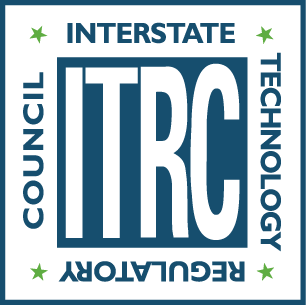
Petroleum Vapor Intrusion CONCEPTUAL SITE MODEL Checklist

|
Petroleum Vapor Intrusion CONCEPTUAL SITE MODEL Checklist |
The information included in this checklist may be useful for developing the site-specific conceptual migration model and in planning the soil gas sampling. You can use this checklist to compile information for each site.
Site ID/Name: ___________________________________________________________
Address/Location: ________________________________________________________
Site Owner/Operator: _____________________________________________________
Released Product(s) & Volume(s): ___________________________________________
Release Date: ___________________________________________________________
Type of Petroleum Site
(Identification of indicator petroleum hydrocarbon compounds and release sources)
□ Gasoline and/or diesel UST locations
□ Commercial and home heating oil locations
□ Refineries
□ Bulk storage facilities
□ Pipelines and transportation
□ Oil exploration and production sites
□ Former manufactured gas plants
□ Creosote (wood treating) facilities
□ Dry cleaners using petroleum solvents (such as Stoddard solvent)
□ Other, describe:
(Required for screening evaluation)
Source(s)
□ Identify affected media
□ Define magnitude and extent of affected media
□ Indicators for screening (state-specific)
□ Indicators/COPCs for investigation (state-specific)
□ Nonpetroleum VOCs
Migration
□ Define lateral separation distance between source and receptor.
□ Define the thickness of unaffected (“biologically active” or “relatively clean”) soil between the source(s) and the building foundation.
□ Describe biodegradation indicators, including O2, CO2, methane, total organic carbon (TOC) content, moisture, temperature, and pH at depths specified.
□ Describe vadose zone lithology.
Buildings (Receptors)
□ Identify and denote on site plan existing and potential future buildings.
□ Identify the occupancy and use of the buildings, for example residential, commercial, or industrial (may need to interview occupants to obtain this information).
□ Describe the construction of the building including materials (such as wood frame or block), openings (windows, doors), and height (one-story, two-story, multiple-story); identify any elevator shafts present in the building (if applicable).
□ Describe the foundation construction including:
□ Describe the HVAC system in the building including:
□ Describe subslab ventilation systems or moisture barriers present on existing buildings, or identify building and fire code requirements for subslab ventilation systems (such as for methane) or moisture barriers below foundations.
□ Identify occupancy and use of off-site buildings affected or potentially affect by site sources. Assess the need for public communication plan.
Engineered Preferential Pathways—Utilities, Process Piping, Sumps
□ Locate and denote on site plan all underground utilities near the soil or groundwater impacts; note utilities that connect affected areas to occupied buildings including depths and entry points.
□ Locate and denote on site plan all underground process piping near the soil or groundwater impacts.
□ Locate and denote on site plan building basement dewatering sumps.
Source Area
□ Identify and denote on site plan the sources and their locations contributing to vapor-phase contaminants related to the subsurface VI pathway (LNAPL, dissolved plume, contaminated soil, soil gas). Estimate mass of LNAPL, dissolved plume size, affected soil volume.
□ Describe and denote on site plan the presence, distribution, and composition (gasoline and ethanol content, diesel, and fuel oil) of LNAPL at the site.
□ Identify and denote on site plan any presence of comingled chlorinated hydrocarbon plume.
□ Identify the vapor-phase contaminants (based on volatility and toxicity) that are to be considered for the subsurface VI pathway (benzene).
□ Describe the status and results for the delineation of contamination in environmental media, specifically soil and groundwater, between the source area and the potential affected buildings.
□ Describe the environmental media (soil, groundwater, both) containing contaminants.
□ Describe the depth to source area (LNAPL, dissolved plume, unsaturated soil, soil gas).
□ Describe the potential migration characteristics (stable, increasing, decreasing) for the distribution of contaminants.
□ Describe contaminant transport mechanisms (diffusion in vadose zone or through capillary zone, advective flows, movement through preferential pathways).
□ Describe remedial actions completed to date.
Geology/Hydrogeology
□ Describe regional geology (especially important in fractured rock or karst areas).
□ Review all boring logs, monitoring well construction, and soil sampling data to understand the following: depth of vadose zone, capillary fringe and the phreatic (saturated) zone
Biological Indicators
□ Describe biological indicators.
□ Describe distinct strata and characteristics (soil type, temperature, moisture content, porosity, bulk density, organic content).
□ Identify the depth to groundwater.
□ Describe groundwater characteristics (seasonal fluctuation, temperature, hydraulic gradient: vertical and horizontal; natural versus induced, flow directions).
Site Characteristics & Considerations
□ Estimate and denote on site plan the lateral extent of and the distance from edge of groundwater plume to building.
□ Identify groundwater beneficial use (potable or nonpotable).
□ Identify nearby potential contaminant sources.
□ Estimate vertical separation distance from vapor source to building foundation and denote on subsurface cross-sections.
□ Describe the surface cover between the vapor source area and the potentially affected building.
□ Identify presence of continuous pavement that may result in unimpeded migration of vapor in the subgrade layer to building foundation.
□ Describe surface water/precipitation infiltration in unpaved areas, serving as a pathway for transport of dissolved O2 to vadose zone for aerobic PHC degradation.
□ Describe background contributions and concentrations of volatile contaminants to indoor air (both ambient/outdoor and indoor sources).
□ Describe data quality for VI assessment (sample collection methods, laboratory detection levels, sufficiency of sample numbers and events, and representative sample locations).
□ Describe rationale for determination of VI exposure pathways and any exclusion.